ASUS R9 290X DirectCU II and Sapphire R9 290X Tri-X Video Card Reviews
Temperature & Noise Testing
No video card review would be complete with out looking at GPU temperatures and noise levels!
ASUS Radeon R9 290X DirectCU II 4GB Video Card Idle Temperature:
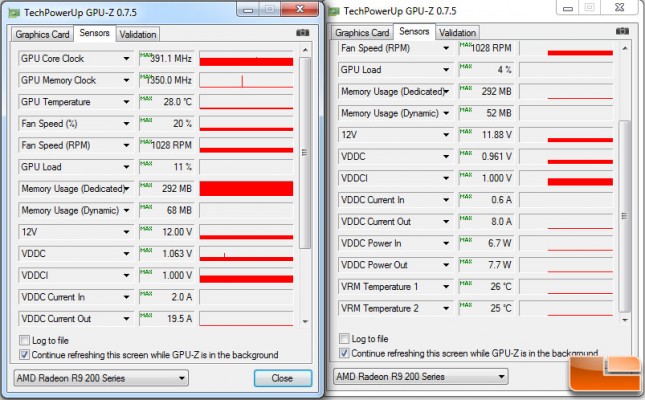
Sapphire Radeon R9 290X TRi-X 4GB Video Card Idle Temperature:
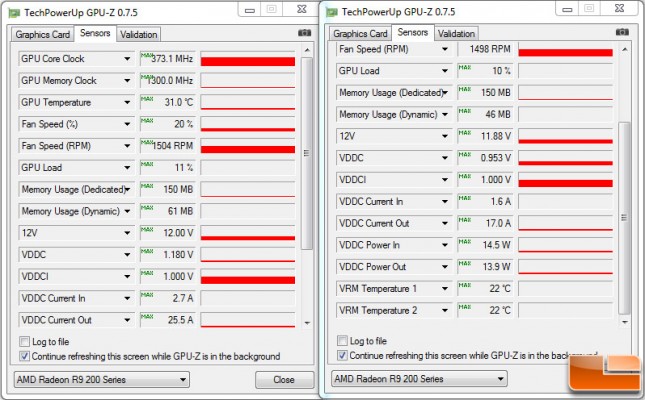
The ASUS Radeon R9 290X DirectCU II and Sapphire Radeon R9 290X Tri-X were pretty much identical at idle when it came to cooling performance. The Sapphire 290X Tri-X was 1C cooler at idle though, so if you had to pick a winner that would be it. The ASUS card was 28C and the Sapphire card was 31C in a room that was 22.0C (72F). The VRM 1 and VRM 2 temperatures were cooler on the Sapphire 290X Tri-X at idle. Note both cards have the fans spinning at 20%, which is 1024RPM on the ASUS dual-fan card and and 1500 RPM on the Sapphire triple-card.
ASUS Radeon R9 290X DirectCU II 4GB Gaming Temperature:
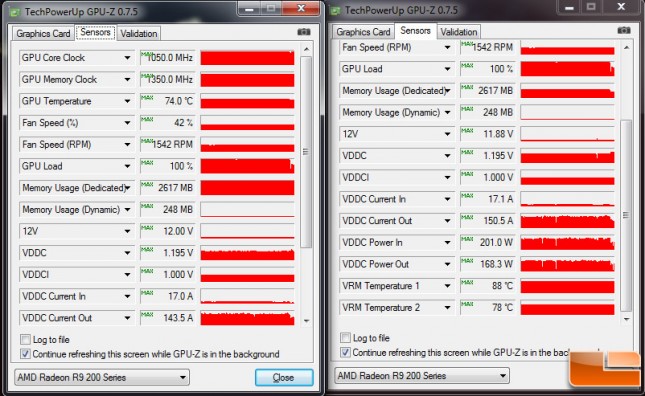
Sapphire Radeon R9 290X TRi-X 4GB Gaming Temperature:
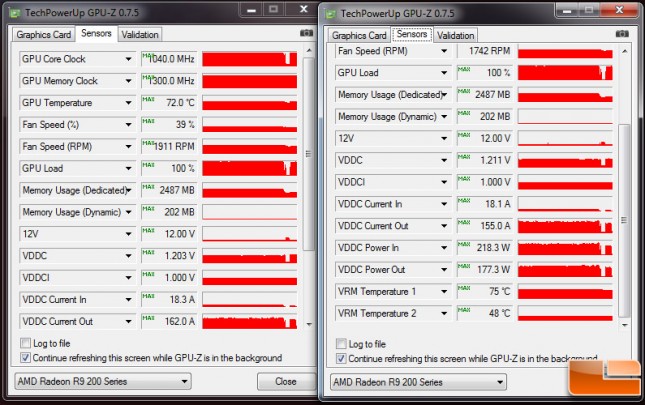
When playing Far Cry 3 and Battlefield 3 for about 30 minutes each, we hit 74C on the ASUS 290X DirectCU II and 72C on the Sapphire 290X Tri-X when it comes to GPU temperatures. We were shocked by the difference in the VRM temperatures as on the ASUS 290X DirectCU II the VRM 1 temp was 88C and the VRM 2 temp was 78C. The Sapphire 290X Tri-X hit 75C on VRM 1 and 48C on VRM 2. Sapphire’s GPU cooler helps keep the VRM 1 temperature 13C cooler and the VRM 2 temperature 30C cooler. The GPU temperature is pretty much identical on these two AMD Radeon R9 290X video cards, but the VRM temperatures are night and day different. It looks like the extra cooling fan on the Sapphire 290X Tri-X GPU cooler really helps keeps the board cooler.
Sound Testing
We recently upgraded our sound meter to an Extech sound level meter with 1.5dB accuracy that meets Type 2 standards. This meter ranges from 35dB to 90dB on the low measurement range, which is perfect for us as our test room usually averages around 36dB. We measure the sound level two inches above the corner of the motherboard with ‘A’ frequency weighting. The microphone wind cover is used to make sure no wind is blowing across the microphone, which would seriously throw off the data.
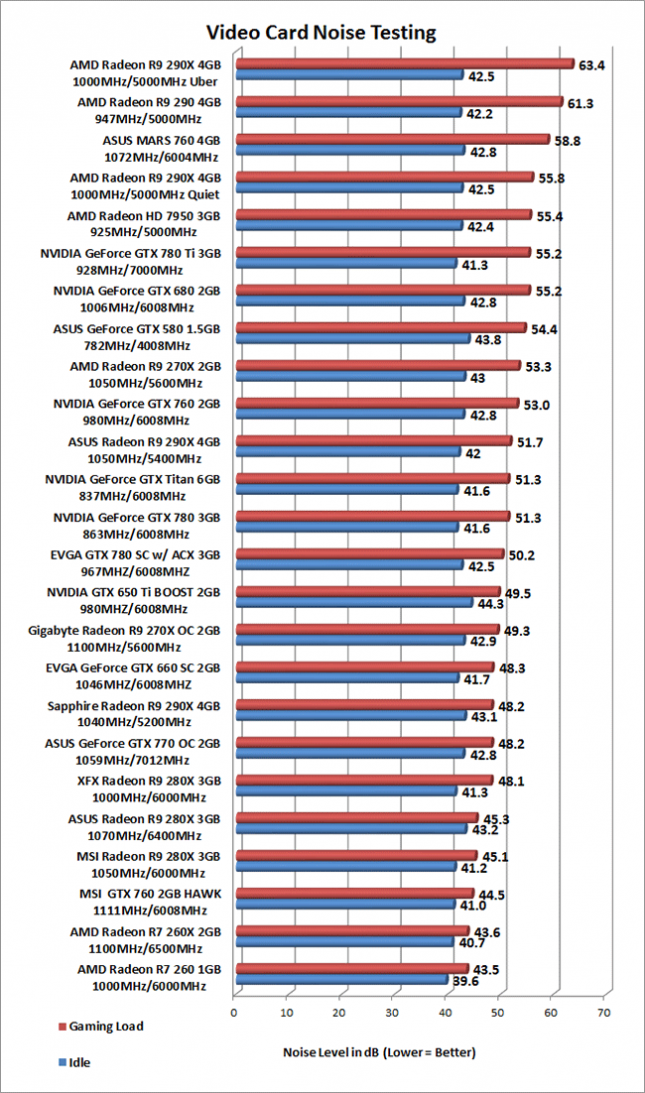
The AMD Radeon R9 290X reference card is pretty loud and hits nearly 64dB on our open air test system. The ASUS and Sapphire cards with their respective custom GPU coolers are much quieter. The ASUS 290X DirectCU II ran at 42.0 dB at idle and 51.7 dB when gaming at full load. The Sapphire 290X Tri-X was a little louder at idle with a reading of 43.1, but was actually quieter at load, hitting just 48.2dB. These aren’t the quietest cards that we have ever tested, but they will be tough to hear inside a gaming case with a bunch of cooling fans in it! Both are hands down better than the AMD reference cooler in terms of noise levels and cooling performance.
